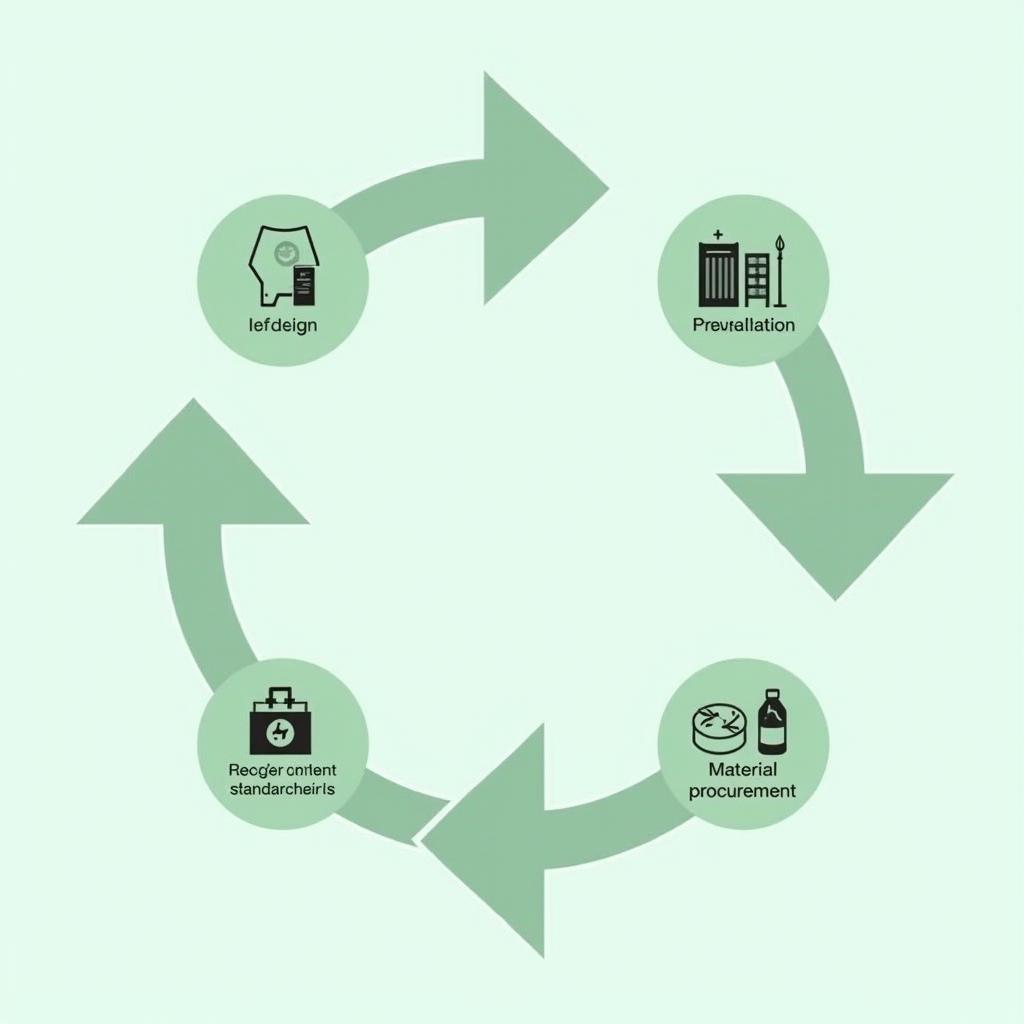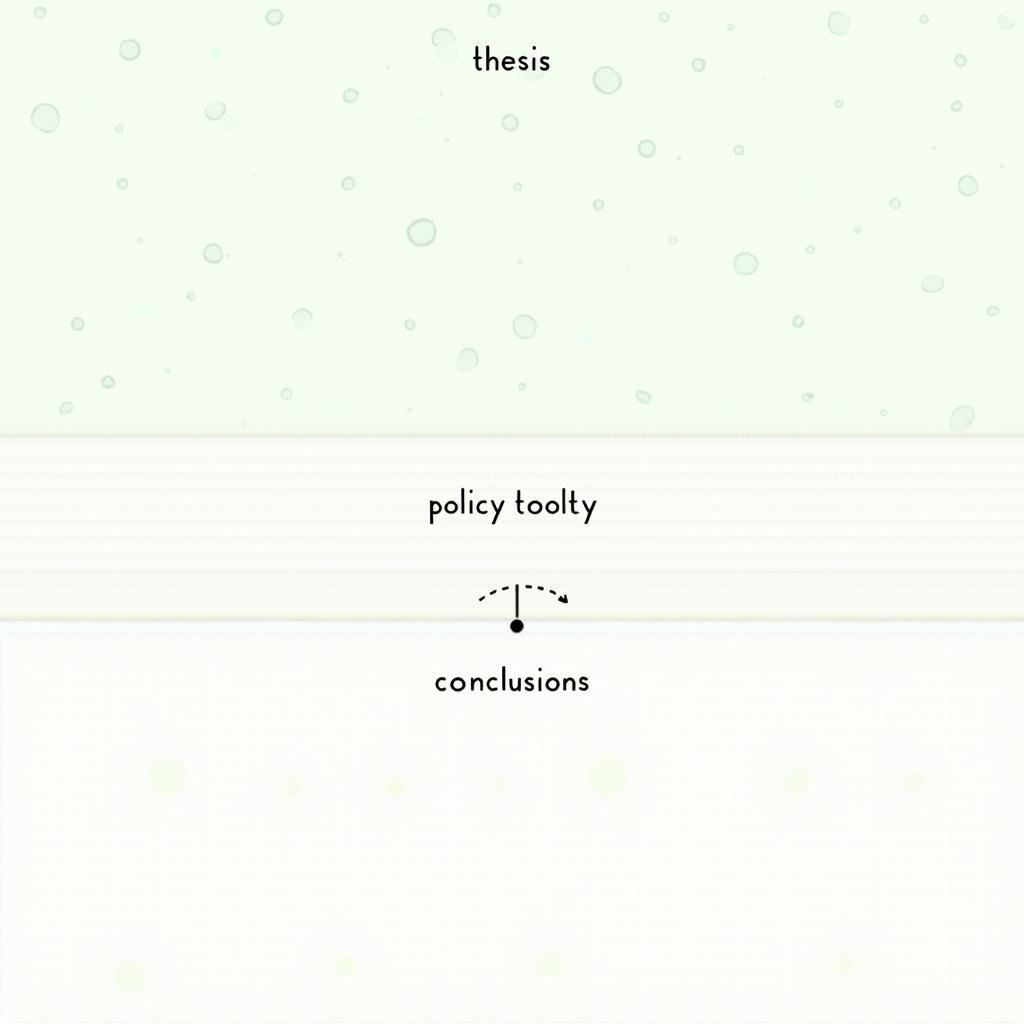Mở bài
Chủ đề How To Promote A Circular Economy In Manufacturing (làm sao thúc đẩy kinh tế tuần hoàn trong sản xuất) xuất hiện ngày càng dày đặc dưới các biến thể quen thuộc như giảm rác thải, trách nhiệm nhà sản xuất, bao bì bền vững. Đây là “miếng bánh” dễ nâng band nếu bạn có khung lập luận rõ ràng, vốn từ học thuật đúng chỗ và biết cách gắn chính sách với ví dụ đời thực. Trong bài viết này, bạn sẽ nhận được: 3 bài mẫu từ Band 5 đến 9, phân tích chấm điểm theo 4 tiêu chí chính thức, bộ từ vựng chủ điểm, cấu trúc câu “ăn điểm”, checklist tự soát lỗi và chiến lược làm bài.
Một số đề luyện tập đã được đăng trên các trang uy tín, sát với chủ đề:
- Some people believe manufacturers and supermarkets should reduce the amount of packaging on goods. To what extent do you agree or disagree? (IELTS Liz – practice question)
- The amount of household waste is increasing. Some people say the only way to increase recycling is to make it a legal requirement. To what extent do you agree or disagree? (British Council – practice)
- Environmental problems are too big for individuals to solve. Only governments and large companies can make a real difference. To what extent do you agree or disagree? (IDP/British Council – practice)
Bài viết này chọn phân tích sâu một đề mới bám sát xu hướng “circular economy”, đồng thời chỉ ra cách chuyển ý từ “rác thải – bao bì – trách nhiệm nhà sản xuất” sang “kinh tế tuần hoàn” để mở rộng lập luận và ghi điểm cao.
[internal_link: ielts-writing-task-2-environment]
1. Đề Writing Part 2
Governments and manufacturers should prioritise policies that accelerate the shift to a circular economy in manufacturing. To what extent do you agree or disagree?
Dịch đề: Các chính phủ và nhà sản xuất nên ưu tiên những chính sách thúc đẩy nhanh quá trình chuyển dịch sang kinh tế tuần hoàn trong lĩnh vực sản xuất. Bạn đồng ý hay không đồng ý đến mức độ nào?
Phân tích đề bài:
- Dạng câu hỏi: Opinion/Agree–Disagree. Bạn cần nêu rõ lập trường (agree/partly agree/disagree) ngay trong mở bài, duy trì nhất quán đến kết luận.
- Thuật ngữ quan trọng:
- Circular economy: hệ thống thiết kế để giảm chất thải, tái sử dụng, tái chế, kéo dài vòng đời vật liệu.
- Manufacturing: khu vực sản xuất – từ thiết kế, nguyên vật liệu, chế tạo, phân phối đến thu hồi sau sử dụng.
- Lỗi thường gặp:
- Nhầm “circular economy” với “recycling” đơn lẻ. Circular còn gồm eco-design, sửa chữa, tái sản xuất (remanufacturing), trách nhiệm mở rộng nhà sản xuất (EPR).
- Viết lan man về biến đổi khí hậu mà không liên hệ cụ thể đến công cụ chính sách trong sản xuất.
- Thiếu ví dụ chính sách cụ thể, thiếu logic chi phí–lợi ích.
- Cách tiếp cận chiến lược:
- Chọn lập trường rõ: “Strongly agree” hoặc “Largely agree with caveats”.
- Body 1: Bộ công cụ chính sách cứng – tiêu chuẩn thiết kế, chỉ tiêu hàm lượng tái chế, EPR, mua sắm công xanh.
- Body 2: Đòn bẩy thị trường – thuế vật liệu/ carbon, ưu đãi cho tái sản xuất, hạ tầng logistics thu hồi, tiêu chuẩn dữ liệu (material passport).
- Phản biện ngắn: Chi phí ban đầu, rủi ro SMEs; nêu giải pháp chuyển tiếp.
 Chiến lược how to promote a circular economy in manufacturing với ví dụ và chính sách cụ thể
Chiến lược how to promote a circular economy in manufacturing với ví dụ và chính sách cụ thể
2. Bài mẫu Band 8-9
Bài Band 8-9 cần: lập trường nhất quán, luận điểm sâu, ví dụ chính sách cụ thể, từ vựng học thuật chính xác, và liên kết mạch lạc.
Bài luận (290–310 từ):
In my view, governments and manufacturers should decisively prioritise policies that accelerate a circular transition in industry. Linear “take–make–dispose” models have locked in waste and carbon; a circular economy offers a pragmatic blueprint to decouple growth from resource use.
First, regulation must set the floor. Mandatory eco-design rules that require design for disassembly and durability would prevent premature obsolescence and make repair economical. Recycled-content standards for plastics, aluminium and paper can create reliable demand for secondary materials, stabilising investment in reprocessing. Crucially, extended producer responsibility (EPR) schemes shift end-of-life costs back to producers, incentivising packaging minimisation and redesign. When public procurement gives preference to remanufactured components and low-waste products, it signals the market at scale.
Second, price signals and infrastructure must reinforce these rules. Material or carbon taxes that reflect the true environmental cost of virgin inputs can make closed-loop options cost-competitive, while targeted subsidies de-risk remanufacturing and high-quality recycling. Governments should co-invest in reverse logistics, digital “material passports,” and standards for data-sharing so that parts can be identified, re-used and traced. Industrial symbiosis parks, where one firm’s by-product becomes another’s feedstock, demonstrate how policy can catalyse collaboration rather than compliance alone.
Sceptics argue that such measures burden small manufacturers. This risk is real; however, it can be mitigated with phased timelines, SME vouchers for redesign, and simplified reporting. Over time, firms that adopt circular models typically see lower material bills, more resilient supply chains, and new revenue from product–service systems.
In short, only a coherent mix of standards, incentives and infrastructure will mainstream circular manufacturing. Far from being an ideological project, it is a competitiveness strategy that rewards innovation while reducing waste—and it will not emerge at scale without deliberate policy leadership and producer responsibility.
Phân tích Band điểm
| Tiêu chí | Band | Nhận xét |
|---|---|---|
| Task Response (Hoàn thành yêu cầu) | 8.5 | Trả lời trực tiếp câu hỏi, lập trường rõ ràng từ mở bài đến kết luận; phát triển đầy đủ 2 luận điểm chính kèm phản biện và giải pháp. Không lan man, ví dụ chính sách cụ thể. |
| Coherence & Cohesion (Mạch lạc & Liên kết) | 8.0 | Bố cục 4 đoạn chuẩn; sử dụng từ nối logic “First/Second/In short”, lặp có kiểm soát, chủ đề câu rõ. Có một số câu dài nhưng vẫn dễ theo dõi. |
| Lexical Resource (Từ vựng) | 8.5 | Kho từ vựng chủ đề phong phú (eco-design, EPR, material passports, industrial symbiosis); collocations chính xác; ít lặp từ; dùng động từ mạnh. |
| Grammatical Range & Accuracy (Ngữ pháp) | 8.0 | Đa dạng cấu trúc: mệnh đề quan hệ, cụm phân từ, câu điều kiện giả định; hầu như không lỗi; dấu phẩy dùng hợp lý. |
Các yếu tố giúp bài này được chấm điểm cao
- Xác định đúng vấn đề tuyến tính vs. tuần hoàn, nêu mục tiêu “decouple growth from resource use”.
- Triển khai bộ công cụ chính sách cụ thể thay vì nói chung chung về “protect the environment”.
- Sử dụng các thuật ngữ chuẩn ngành: design for disassembly, recycled-content standards, EPR, material passports.
- Có yếu tố phản biện và giải pháp chuyển tiếp cho SMEs, thể hiện tư duy cân bằng.
- Dùng collocations mạnh: signal the market, de-risk remanufacturing, closed-loop options.
- Kết luận tổng hợp “mix of standards, incentives and infrastructure” tạo thông điệp rõ và mạch lạc.
3. Bài mẫu Band 6.5-7
Đặc điểm: Trả lời đúng trọng tâm, dẫn chứng hợp lý nhưng từ vựng và ngữ pháp ít “đắt”, đôi chỗ lặp ý hoặc phát triển chưa sâu.
Bài luận (255–275 từ):
I largely agree that governments and producers should push a shift towards a circular economy in manufacturing. The traditional model creates too much waste, while circular thinking helps companies save materials and avoid pollution.
To begin with, regulation can guide companies in the right direction. For example, if the law requires more durable products and easier repair, consumers will keep items for longer and less waste will be created. In addition, recycled content rules for common materials could increase demand for secondary resources and make recycling facilities more viable. Another useful policy is producer responsibility, which means manufacturers have to pay for collection and treatment, so they will design smarter packaging.
Besides rules, financial tools are also important. Tax reductions or subsidies can support firms that invest in remanufacturing or better sorting systems, while moderate taxes on virgin materials may encourage companies to choose recycled inputs. Governments can also use public procurement to buy circular products and send a strong signal to the market.
However, one concern is the cost for small and medium-sized enterprises. To handle this, authorities should provide simple guidelines, longer timelines, and small grants for redesign. If these supports exist, circular policies can be fair and realistic.
Overall, a balanced policy mix is needed. By combining standards with incentives, governments and manufacturers can make circular manufacturing practical and attractive, which benefits both the economy and the environment.
Phân tích Band điểm
| Tiêu chí | Band | Nhận xét |
|---|---|---|
| Task Response (Hoàn thành yêu cầu) | 7.0 | Trả lời đầy đủ, có ví dụ chính sách; phần phản biện ngắn gọn hợp lý nhưng chưa thật sâu. |
| Coherence & Cohesion (Mạch lạc & Liên kết) | 7.0 | Tổ chức 4 đoạn rõ; từ nối cơ bản; một số câu chuyển ý còn đơn giản, nhưng mạch vẫn trôi chảy. |
| Lexical Resource (Từ vựng) | 6.5 | Từ vựng đủ dùng; có thuật ngữ chính nhưng thiếu độ đa dạng (ít cụm học thuật nâng cao). Lặp từ “policy”, “companies”. |
| Grammatical Range & Accuracy (Ngữ pháp) | 7.0 | Câu phức ở mức vừa; ít lỗi; cấu trúc chưa đa dạng như non-defining relative clauses, inversion. |
So sánh với bài Band 8-9
- Bài 8-9 có thuật ngữ chuyên sâu hơn (material passports, industrial symbiosis) và lập luận chính sách–thị trường chặt chẽ hơn; bài 6.5-7 dừng ở mức “rules + incentives”.
- Phản biện của bài 8-9 có giải pháp cụ thể (SME vouchers, phased timelines), còn bài 6.5-7 nêu hỗ trợ chung chung.
- Về ngữ pháp, bài 8-9 dùng cấu trúc nâng cao (participle phrases, inversion) giúp tăng điểm GRA.
4. Bài mẫu Band 5-6
Đặc điểm: Ý đúng hướng nhưng phát triển còn mỏng, từ vựng lặp, có lỗi ngữ pháp/chuẩn chính tả, ví dụ chung chung.
Bài luận (250–265 từ):
Many people say we should move to a circular economy in factories, and I generally agree. But I think this idea is sometimes too ideal and expensive for normal producers.
Firstly, the government can make some rules, like asking companies to use recycled materials and make products that last longer. This is good because it reduces waste. However, many company will not follow if the rules are strict, and they might increase prices for consumers. Also, recycling is not always possible because materials are mixed and hard to separate.
Secondly, the government can give money to businesses for recycling and re-manufacturing. Tax can also be used to make virgin materials more expensive. But this policy have side effects: product cost can go up and small companies can not compete. In my country, logistics for collecting items is weak, so circular economy may only work in big cities.
In conclusion, I agree that moving to circular economy is useful for environment, but it is not realistic in many places now. We should focus on education and simple recycling first, and later do more advanced things.
Phân tích Band điểm
| Tiêu chí | Band | Nhận xét |
|---|---|---|
| Task Response (Hoàn thành yêu cầu) | 6.0 | Có lập trường, nêu vài chính sách nhưng phát triển nông, thiếu minh chứng cụ thể; kết luận chưa tổng hợp giải pháp. |
| Coherence & Cohesion (Mạch lạc & Liên kết) | 6.0 | Bố cục cơ bản đủ; từ nối hạn chế; lặp ý và lặp từ; một số câu chuyển đoạn đột ngột. |
| Lexical Resource (Từ vựng) | 5.5 | Từ vựng đơn giản, dùng sai/không nhất quán (re-manufacturing), collocations yếu; lặp “government”, “companies”. |
| Grammatical Range & Accuracy (Ngữ pháp) | 5.5 | Lỗi chia động từ, số ít–số nhiều; cấu trúc câu đơn nhiều; chấm câu chưa chuẩn. |
Những lỗi sai của bài – phân tích & giải thích
| Lỗi sai | Loại lỗi | Sửa lại | Giải thích |
|---|---|---|---|
| many company will not follow | Số ít–số nhiều | many companies will not follow | “Company” số ít; phải dùng plural sau “many”. |
| re-manufacturing | Chính tả/hình thái | remanufacturing | Từ chuẩn là “remanufacturing” (không có dấu gạch). |
| this policy have | Hòa hợp chủ–vị | this policy has | “Policy” số ít → động từ “has”. |
| is useful for environment | Mạo từ | is useful for the environment | “Environment” cần “the” khi nói chung về môi trường. |
| can not | Chính tả | cannot | Hình thức chuẩn là “cannot”. |
| move to circular economy | Mạo từ | move to a circular economy | Cần mạo từ không xác định “a”. |
| education and simple recycling | Mơ hồ | education and basic, well-funded recycling programs | Cụ thể hóa cụm danh từ để rõ nghĩa. |
| too ideal | Collocation | too idealistic | “Idealistic” phù hợp ngữ cảnh đánh giá ý tưởng. |
Cách Cải Thiện Từ Band 6 Lên Band 7
- Mở rộng luận điểm bằng 1–2 ví dụ chính sách cụ thể (EPR cho bao bì, chuẩn hàm lượng tái chế 30% cho nhựa).
- Đa dạng hóa từ vựng học thuật: eco-design, reverse logistics, public procurement.
- Nâng cấu trúc câu: thêm mệnh đề quan hệ, cụm phân từ; kết nối câu bằng therefore, consequently, in practice.
- Soát lỗi mạo từ, số ít–số nhiều và chia thì hiện tại đơn.
- Thêm phần phản biện có giải pháp: hỗ trợ SMEs bằng voucher tư vấn, lộ trình 3–5 năm.
5. Từ vựng quan trọng cần nhớ
| Từ/Cụm từ | Loại từ | Phiên âm | Nghĩa tiếng Việt | Ví dụ (tiếng Anh) và Collocations |
|---|---|---|---|---|
| circular economy | n. | /ˌsɜːkjələr ɪˈkɒnəmi/ | kinh tế tuần hoàn | Policies can accelerate the transition to a circular economy. Coll: transition to, promote, scale up |
| manufacturing | n. | /ˌmænjuˈfæktʃərɪŋ/ | ngành sản xuất | Manufacturing must reduce waste and design for repair. Coll: manufacturing sector |
| extended producer responsibility (EPR) | n. | /ɪkˈstendɪd prəˈdjuːsə rɪˌspɒnsəˈbɪləti/ | trách nhiệm mở rộng nhà SX | EPR shifts end-of-life costs to producers. Coll: implement EPR |
| remanufacturing | n. | /ˌriːˌmænjuˈfæktʃərɪŋ/ | tái sản xuất | Subsidies can de-risk remanufacturing. Coll: invest in remanufacturing |
| design for disassembly | n. | /dɪˈzaɪn fə dɪˈsæmbli/ | thiết kế để tháo rời | Firms should design for disassembly and durability. |
| industrial symbiosis | n. | /ɪnˈdʌstriəl ˌsɪmbiˈəʊsɪs/ | cộng sinh công nghiệp | Industrial symbiosis turns by-products into inputs. |
| material passport | n. | /məˈtɪəriəl ˈpɑːspɔːt/ | hộ chiếu vật liệu | A material passport enables traceability and reuse. |
| green public procurement | n. | /ɡriːn ˈpʌblɪk prəˈkjʊəmənt/ | mua sắm công xanh | Green public procurement signals the market. |
| recycled-content standard | n. | /riːˈsaɪkld ˈkɒntent ˈstændəd/ | chuẩn hàm lượng tái chế | A 30% recycled-content standard can boost demand. |
| closed-loop supply chain | n. | /kləʊzd luːp səˈplaɪ tʃeɪn/ | chuỗi cung ứng khép kín | Closed-loop supply chains rely on reverse logistics. |
| life-cycle assessment | n. | /ˈlaɪf ˌsaɪkl əˈsesmənt/ | đánh giá vòng đời | Policies should be informed by life-cycle assessment. |
| decouple (growth from resource use) | v. | /ˌdiːˈkʌpl/ | tách rời | A circular economy aims to decouple growth from resource use. |
| foster/promote/advance | v. | /ˈfɒstə/, /prəˈməʊt/, /ədˈvɑːns/ | thúc đẩy | Governments can foster circular innovation. |
| mandate/require | v. | /ˈmændeɪt/, /rɪˈkwaɪə/ | bắt buộc/yêu cầu | The law can mandate eco-design. |
| not only… but also | linker | — | không chỉ… mà còn | Not only do standards matter, but incentives also shape markets. |
6. Cấu trúc câu dễ ăn điểm cao
- Câu phức với mệnh đề phụ thuộc
- Công thức: Mệnh đề phụ thuộc (when/if/because/although) + mệnh đề chính
- Ví dụ từ bài Band 8-9: Although sceptics argue that such measures burden small manufacturers, this risk is real; however, it can be mitigated with phased timelines.
- Vì sao ghi điểm: Tạo quan hệ nhân quả/nhượng bộ rõ, tăng tính học thuật.
- Ví dụ bổ sung: If standards set the floor, markets can scale solutions. Because data are traceable, components can be reused.
- Lỗi thường gặp: Thiếu dấu phẩy sau mệnh đề phụ ở đầu câu; dùng “because of” + mệnh đề.
- Mệnh đề quan hệ không xác định (non-defining relative clause)
- Công thức: Danh từ, which/who + mệnh đề bổ sung, mệnh đề chính
- Ví dụ: public procurement, which gives preference to remanufactured components, signals the market at scale.
- Vì sao: Thêm thông tin học thuật mà vẫn mượt.
- Ví dụ bổ sung: EPR, which internalises end-of-life costs, drives redesign. Material passports, which enable traceability, support reuse.
- Lỗi thường gặp: Bỏ dấu phẩy; dùng “that” thay “which” trong non-defining.
- Cụm phân từ (participle phrase)
- Công thức: V-ing/V-ed + cụm bổ ngữ, mệnh đề chính
- Ví dụ: Demonstrating how policy can catalyse collaboration, industrial symbiosis parks reduce waste.
- Vì sao: Cô đọng ý, tăng nhịp điệu học thuật.
- Ví dụ: Having set minimum standards, governments can phase in taxes. Designed for disassembly, products last longer.
- Lỗi thường gặp: Treo chủ ngữ (dangling participle).
- Câu chẻ (cleft sentences)
- Công thức: It is/was + thành phần nhấn mạnh + that/who + mệnh đề
- Ví dụ: It is a coherent mix of standards, incentives and infrastructure that will mainstream circular manufacturing.
- Vì sao: Nhấn mạnh luận điểm trọng tâm.
- Ví dụ: It is public procurement that can shift markets quickly. It was EPR that changed packaging design.
- Lỗi thường gặp: Nhầm “that” và “which”, thiếu thì động từ.
- Câu điều kiện nâng cao
- Công thức: If + S + were to V/should V, S + would/could + V
- Ví dụ: If governments were to price virgin materials accurately, closed-loop options would become competitive.
- Vì sao: Giả định chính sách, lập luận thuyết phục.
- Ví dụ: Should standards be delayed, investment might stall. If SMEs received vouchers, redesign could accelerate.
- Lỗi thường gặp: Dùng thì hiện tại đơn trong mệnh đề kết quả.
- Đảo ngữ nhấn mạnh
- Công thức: Only by/Not until/Rarely + trợ động từ + S + V
- Ví dụ: Only by aligning regulation with incentives can circular manufacturing scale.
- Vì sao: Tạo điểm nhấn phong cách học thuật.
- Ví dụ: Not until data are standardised will reuse be efficient. Rarely do taxes alone change design.
- Lỗi thường gặp: Quên đảo trợ động từ; dùng sai thì.
7. Checklist Tự Đánh Giá
- Trước khi viết:
- Gạch chân từ khóa: circular economy, manufacturing, prioritise policies.
- Chọn lập trường rõ ràng; lập dàn ý 2 body + phản biện.
- Liệt kê 4–5 công cụ chính sách cụ thể (eco-design, EPR, recycled-content, procurement, taxes).
- Trong khi viết:
- Mở bài: paraphrase đề + nêu quan điểm.
- Mỗi body: topic sentence rõ + 2 minh chứng cụ thể + kết câu nhấn mạnh.
- Dùng 2–3 cấu trúc nâng cao (câu chẻ, mệnh đề quan hệ, đảo ngữ) một cách tự nhiên.
- Sau khi viết:
- Soát mạo từ a/an/the; số ít–số nhiều; chia động từ.
- Tìm từ lặp và thay bằng đồng nghĩa phù hợp ngữ cảnh.
- Kiểm tra logic: chính sách → cơ chế tác động → kết quả.
- Mẹo quản lý thời gian:
- 3 phút đọc đề + dàn ý; 30 phút viết; 5–7 phút soát lỗi.
- Ưu tiên hoàn chỉnh 2 body mạnh thay vì 3 body mỏng.
 Sơ đồ lập dàn ý IELTS Writing Task 2 về how to promote a circular economy in manufacturing
Sơ đồ lập dàn ý IELTS Writing Task 2 về how to promote a circular economy in manufacturing
Kết bài
Khi viết về how to promote a circular economy in manufacturing, chìa khóa là biến ý tưởng “xanh” thành bộ công cụ cụ thể: tiêu chuẩn thiết kế, EPR, chỉ tiêu hàm lượng tái chế, mua sắm công xanh, thuế vật liệu và hạ tầng thu hồi. Bạn có thể nâng band nhanh nếu thể hiện mối liên hệ chính sách → cơ chế khuyến khích → tác động thực tế, đi kèm từ vựng chuẩn và cấu trúc học thuật vừa phải nhưng chính xác. Hãy luyện theo dàn ý trong bài, so sánh với ba bài mẫu để nhận ra khoảng cách hiện tại và mục tiêu tiếp theo.
Con đường cải thiện thường mất 4–8 tuần luyện viết đều đặn, mỗi tuần 2–3 bài có phản hồi. Bắt đầu ngay: viết một bài theo đề trong mục 1, áp dụng 2 cấu trúc nâng cao và tối thiểu 6 cụm từ vựng ở mục 5; sau đó tự chấm theo checklist mục 7 và chia sẻ bản viết trong cộng đồng học tập để nhận góp ý. Tài nguyên bổ sung: [internal_link: tu-vung-ielts-chu-de-environment], [internal_link: meo-viet-ielts-task-2-band-7]. Hãy lưu bài này, luyện tập có chủ đích, và quay lại đối chiếu sau mỗi tuần để thấy tiến bộ rõ rệt.


